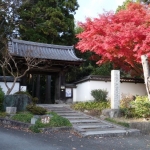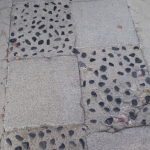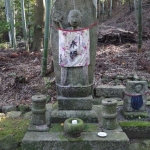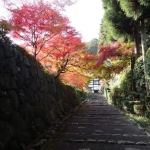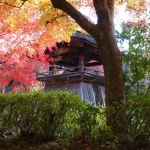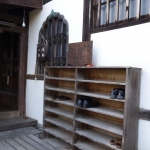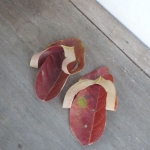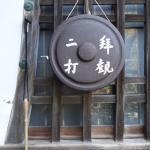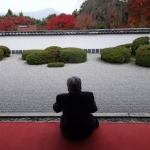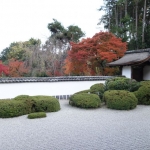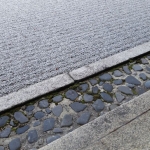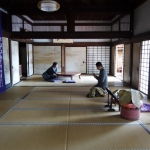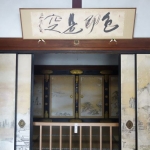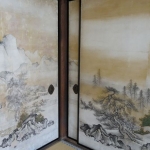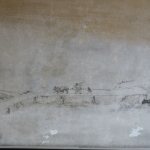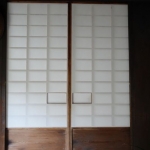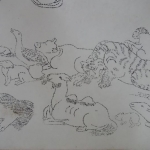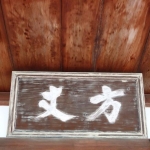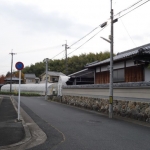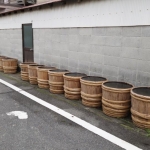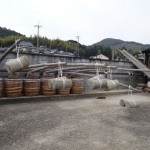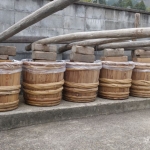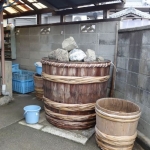Shoden-ji
the poignancy of closing autumn,
whom to tell?
–Ryokan
This often-overlooked Rinzai Zen temple is situated in the uncrowded heavily wooded northern end of Kyoto. Some Japanese friends took me there, as it is one they visit very often. This area was once famous for its many vegetable farms. We were delighted to visit one on our walk.
The garden is unique in that groupings of trimmed azaleas, rather than the groups of rocks more common to Zen garden design, grow from its white gravel base. It is a karesansui (dry garden) in the classic tradition. For example, the azaleas are grouped in clusters of 7-5-3 (shichi-go-san), like the rocks in Zen gardens such as Ryoan-ji. This configuration was considered particularly auspicious in terms of health and longevity. Beyond the white walls appears Mt. Hiei, which becomes another effective use of “borrowed scenery.” The garden, called “Shishi no Ko Watashi,” is said to represent a lioness and her cubs.
The main Hall has very fine paintings by Kano Sanraku. There was also a hanging scroll depicting the death of Buddha on display. On closer observation, I saw that every line of the figures, flowers, and animals is actually the minute script of a sutra.
Shoden-ji is one of five chitenjoji, literally, “temples with bloody ceilings.” In 1600 troops at Fushimi Castle faced defeat and many decided to commit ritual suicide. Legend holds that the triumphant Tokukawa shoguns gave planks from the corridors of Fushimi Castle to five different temples to place in their ceilings, honoring the spirits of the warriors by putting the boards where no one could ever tread on them.


